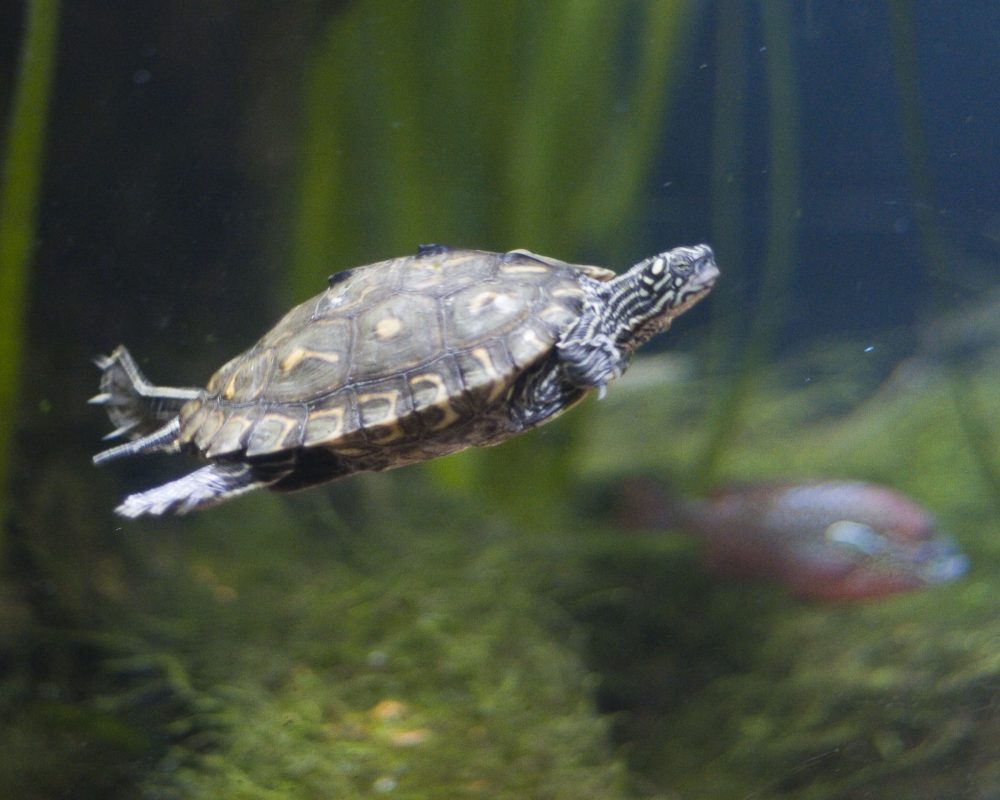One of the aquarium pets gaining in popularity lately is the always entertaining and ever-charming aquatic turtle. With all of their interesting habits and personality quirks, they are fantastic pets that can provide years of interest and engagement. Many turtles can easily live to 30 years and beyond, so it is imperative that you consider this when considering one on as a pet or you are planning ahead to provide adequate care and a habitat they can thrive in for the long-haul.
Habitat
Aquatic turtles are best kept in glass aquariums as they provide for great viewing and are easier to clean. When sizing an aquarium, the following guidelines should be followed in order to provide enough space for your pet turtle to live a happy and healthy life.
- Turtles 4-6 inches in length – 30 gallon tank
- Turtles 6-8 inches in length – 55 gallon tank
- Turtles 8 inches plus – 75 to 125 gallon tank
Make sure that you are prepared to increase the aquarium size as your turtle grows. Allowing them to live in a habitat that is too small can lead to a host of health problems, odor issues, maintenance overload and will leave you with an unhappy pet. Remember, the size of the aquarium, bioactivity level and your maintenance schedule can have a huge impact on the long term health of your turtle!
Water and Lights
Turtles, like most other aquatic animals, require clean water and adequate filtration to thrive. Make sure that you are using a high-quality filtration system that is slightly oversized for your water volume and that you are giving the aquarium a regular cleaning. Water quality can also be impacted by other elements inside the aquarium and their degree of waste or algae accumulation. Avoid useless decorations and instead make sure that your turtle has a basking rock, or a platform that will allow it to climb completely out of the water. Which leads us to another important element, the basking light. Turtles need both UVA and UVB light to survive. They also need a light that will keep their basking spot at a steady temperature in the 85-95°F range depending on your choice of turtle. Like any other reptile, turtles are cold-blooded and require ambient heat to regulate their body temperature.
Nutrition
A balanced diet is critical to maintaining your turtle’s health. There are a number of pellet-based turtle foods that combine a variety of nutrient dense raw materials to provide adequate nutrition. There are also a number of freeze dried insect options that allow your turtle to eat a more natural food, as they would in nature. As they get older, they will also feed on live insects and plants although keeping up with the correct nutritional balance with live feed can be difficult. Hikari® has just developed a new probiotic turtle diet that provides all of the necessary nutritional components along with specific ingredients that support the intestinal flora and immune system of the turtle.
Like other aquatic pets, turtles has specific requirements to allow them to live and long and health-filled life. Before diving in and purchasing one, visit your local aquarium shop and talk to the experts about the best practices of responsibly owning and caring for an aquatic turtle. They can save you lots of time and money with great advice and practical experience they can share.

